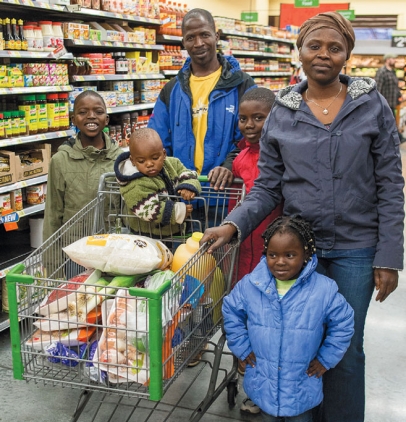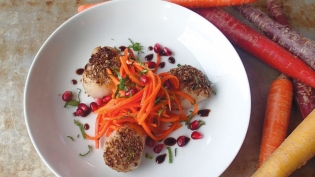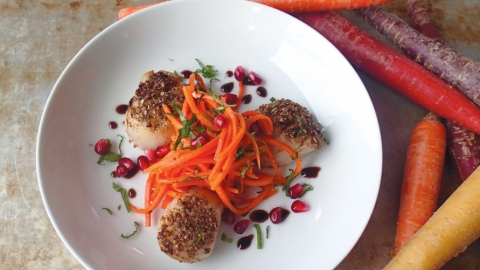Foreign Tastes: A New Menu for a New Land
The kitchen in Samson Madjitoloum’s apartment is bare. Mini blinds in the window are cracked to let winter light fall onto a plain wooden table surrounded by a few chairs. There are no canisters, no kitschy salt and pepper shakers, no pictures on the wall, no personal belongings.
Nothing makes the apartment look lived in saved for the presence of Madjitoloum, his wife and their four small children. They came from central Africa in early winter and spent the first month living in a hotel. Now, they live in an apartment—and they have a tremendous amount to learn about it.
Boise State University student Brittany Temple isn’t as shy as the refugee family. She sits at their dining table with a booklet of everything a person could know about living in an apartment: how the stove works, how the smoke detector works, how to keep bugs away, how to change the thermostat (Madjitoloum bumps it up to 80), what goes in the refrigerator, what belongs in the cupboards, why it’s important not to use the oven as a heater, and why you shouldn’t put hot pots on the floor (it’ll melt the linoleum).
Temple is working towards a degree in social work with a refugee studies minor and spends her spare time volunteering for the International Rescue Committee (IRC), helping newly arrived refugees settle in Boise. Mainly, she teaches them how to use their kitchens.
Madjitoloum is one of almost 800 refugees to be settled in Boise in 2014. On top of all the other changes in a refugee’s life, from leaving their friends and family, homes, countries and cultures, they have to adjust to eating American foods. The change doesn’t come easy.
“When we came here, we didn’t know what to eat because everything we see, we don’t know how to eat it,” Madjitoloum said with the help of a French translator. “The kids either have diarrhea or constipation since we came here.”
The family tries to buy food similar to what they ate in Africa— chicken, potatoes, onions, tomatoes.
“But it’s not like the Africa food,” Madjitoloum said. “We miss it all the time.”
The IRC sends volunteers to take newly arrived families on a tour of WinCo. According to Julianne Tzul, IRC’s executive director, volunteers try to keep families away from the center of the store—where most of the processed foods are. Instead, they spend time in the produce, meat and dairy aisles. The information, though, doesn’t always stick.
“We had a family that was really wanting fish, so they went to a pet store and bought all these bags of little tiny fish because they didn’t know how to find large, good fish in the market,” Tzul said. “Just the idea of being so thrown off, trying to find basic supplies. You see a pet store sign with a picture of a fish on it, and you think that’s where people get fish. So we went back to WinCo and took them to the fish counter.”
Once families like the Madjitoloums get settled, Katie Painter enters their lives. She’s the refugee agriculture coordinator at Global Gardens. She matches up families with farm plots in community gardens, organizes a CSA and teaches field-based workshops for refugees. She works with 300 families to help them grow food for their homes. In her work, she experiences every day the confusion refugees face when it comes to eating American food.
“A lot of them were cooking in refugee camps for a really long time, and all they had access to were rations of nonperishables. Not good-quality fresh food,” she said.
When virtually everything else around you has changed, it’s still hard to give up the ways you used to nurture your body.
“Imagine you’re a refugee mom and you go to work changing beds in a hotel all day, then you come home and your nine kids need help with confusing homework, then you’re supposed to cook a butternut squash when you’ve never seen one before,” Painter said.
Such a drastic transition of diet and environment can even become dangerous. Tzul, from the IRC, said she once visited a home of a family with three diabetics, and found several cake containers in the trash can.
So local agencies keep working with the families and introducing them to ethnic markets and places like the Boise International Market to help refugee families feel more at home in their new city. It’s still a far cry from the foods they’re used to.
“The food here, we have never seen,” Madjitoloum said. “The food back there, we won’t forget about it.”







